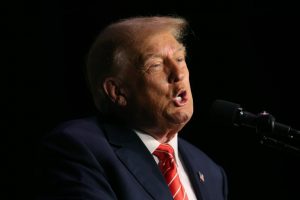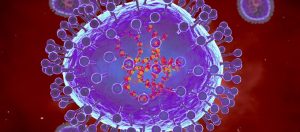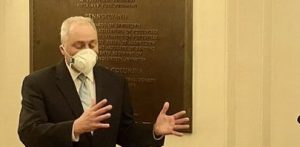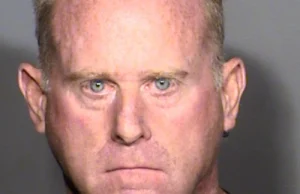The COVID-19 virus does not remain active in nasal and oral cavities 12-24 hours after the death of an infected person, according to AIIMS forensic chief Dr. Sudhir Gupta. As a result of this, the risk of transmission from the dead reduces drastically and almost becomes nil.
Also read: Delhi Police asks two Congress leaders to join probe in COVID toolkit case
This conclusion was reached after a pilot experiment conducted over the last one year at the Department of Forensic Medicine at AIIMS on COVID-19 positive medico-legal cases.
“Around 100 bodies were re-tested for coronavirus infection in an interval of 12 to 24 hours after death and the result was negative. The virus does not remain active at all in nasal and oral cavities 24 hours after death,” Dr. Gupta told PTI.
Also read: As coloured fungus cases rise, ICMR’s advise on how to handle crisis
“The risk of transmission of coronavirus 12 to 24 hours after the death of an infected person is highly unlikely,” he added.
For safety purposes and precautionary measures, he said that the nasal and the oral cavities should be plugged/blocked to prevent any kind of leakage of body fluids or other orifices. Punctures resulting from removal of catheter, drains, tubes should be disinfected.
Also read: COVID antibody cocktail that Donald Trump took now in India. Check price
Furthermore, as a precautionary measure, people handling the corpses must wear protective gear such as masks, gloves and PPE kits.
“Collection of bones and ashes is completely safe as there is no risk of transmission of infection from the mortal remains,” said Dr. Gupta.
“The study was conducted in the interest of preserving the dignity of the dead,” he stated.
The ICMR in its ‘standard guidelines for medico-legal autopsy in COVID-19 deaths’ which was issued in May, 2020 advised that – adoption of invasive techniques should be avoided for forensic autopsy in COVID-19 deaths, as mortuary staff are exposed to potentially dangerous health risks due to organ fluids and secretions even after taking the highest and best precautions.
Also read: Need more information from Bharat Biotech for Covaxin approval, says WHO
Non-invasive autopsy techniques, which have been described in guidelines, should be used, if at all required, to prevent the risk of spreading the infection to mortuary staff, police personnel and also to avoid contamination of mortuary surfaces, the guidelines stated.
The guidelines read, “If the autopsy surgeon feels that he will not be able to conclude cause of death or any other related issue without dissection, then he can proceed with minimal invasive/limited internal dissection.”
“However, the dissection has to be performed keeping in mind that the conduction of autopsy is a high-risk procedure which is potentially as hazardous as any other procedure performed on the body of a COVID-19 patient,” the guidelines said, listing the precautions to be followed while conducting an autopsy by adopting proper infection control measures.
Also read: Countries discuss WHO reform and how to rebuild post-COVID world
According to the procedure of conducting forensic autopsy, “Along with external examination, multiple photographs and verbal autopsy (as depicted by WHO). The post mortem should be conducted strictly avoiding any invasive surgical procedures and avoiding splashing of body fluids contact for staffs, body handlers and doctors conducting post mortem.”
Nevertheless, the waiving of a post-mortem will help to prevent the spread of infection to doctors, other medical staff, mortuary staff, police persons and all the people involved in the chain of disposing off the cadaver.






